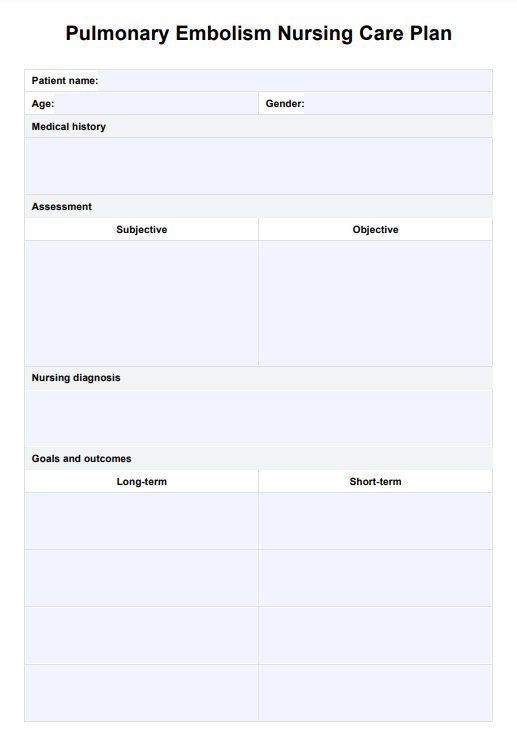Nurses play a crucial role in monitoring vital signs, administering medications like anticoagulation therapy, and providing oxygen therapy. They also educate patients on managing their condition, recognizing warning signs, and preventing further blood clot formation.

Pulmonary Embolism Nursing Care Plan
Use our Pulmonary Embolism Nursing Care Plan Template for planning and managing the care of a patient with a pulmonary embolism.
Pulmonary Embolism Nursing Care Plan Template
Commonly asked questions
The primary focus is on stabilizing the patient's respiratory status, preventing additional blood clots, and maintaining pulmonary blood flow. Nurses also assess for potential complications, such as ventricular failure, and provide emotional support to reduce patient anxiety.
Nursing goals include restoring optimal oxygenation through supplemental oxygen, preventing the recurrence of PE with anticoagulant therapy, and ensuring the patient understands their treatment plan. Additional goals involve managing blood vessels' health and preventing ventricular failure for better long-term outcomes.
EHR and practice management software
Get started for free
*No credit card required
Free
$0/usd
Unlimited clients
Telehealth
1GB of storage
Client portal text
Automated billing and online payments











